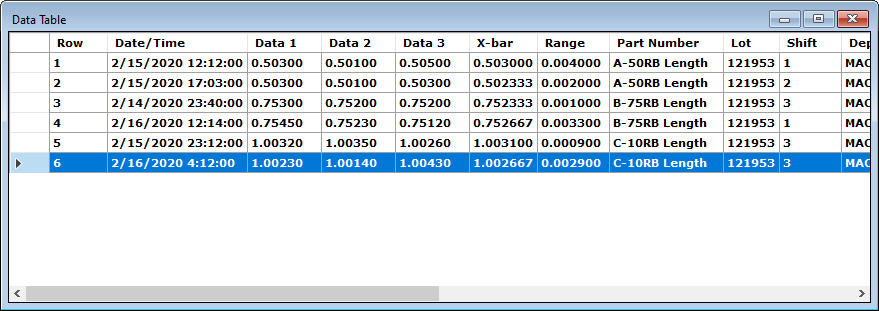
The Multiple-standard Data Table displays individual SPC data records for multiple standards, like this example:

|
Contents [Hide] |
To determine the data records that will be retrieved for the Multiple-standard Data Table:
Use the Part
Number tab to choose
SPC standards.
 If you select all
SPC standards, important
considerations apply.
If you select all
SPC standards, important
considerations apply.
Use the Settings tab to choose settings that will apply to each SPC standard you selected:
Filter
 Any Sort
Order options in the filter are not applied to this type
of data table.
Any Sort
Order options in the filter are not applied to this type
of data table.
Any other Retrieval/Configuration settings
If GainSeeker determines that more than 10,000 rows will be retrieved for this table, it will display a warning prompt that continuing to retrieve more data may cause out-of-memory errors This prompt can be displayed when you create the table, refresh an existing table, or open a desktop that contains this table. Any Send to options for such a large table will also be very slow. |
On the Settings tab, this is found at Chart overrides | Charts | Default reports | Multiple-standard data table columns.
For information on setting or changing the column report for this and other data tables, see Using the Data Table columns dialog.
When the Multiple-standard Data Table is displayed, you can use many of the tools that are available for other Data Table windows or Summary Charts, such as:
Sending the chart to the Windows clipboard, another program, an e-mail, or a file
The rows on this table are automatically sorted in order by individual retrieval groups (unique combination of SPC standard, filter, and date period) and by date/time within each retrieval, and opening a desktop that contains this table will always apply this sort order. To temporarily change the sort order of these rows, click the column header by which you want to order the data; click it again to reverse the sort (ascending or descending).